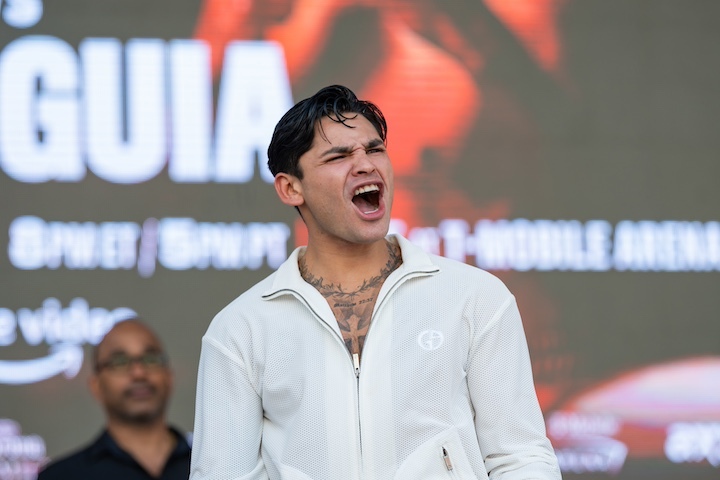6. DRUG ENFORCEMENT
There is little point in taking any steps if arguably the most important one of all – the implementation of an effective and universal drug testing system – is not among them.
Boxing is perceived as the most dangerous sport in the world, yet it continues to be some way behind other sports when it comes to drug protocols.
There have been numerous high-profile cases in recent years, yet the difference in which each have been managed is startling. The Conor Benn case, which effectively began in July 2022, is ongoing; Amir Khan was suspended for two years, yet it took 14 months for that punishment to be enforced; Ryan Garcia has just begun a one-year suspension two months after he failed two tests. Worse, numerous boxers who have failed multiple tests in the past remain active.
This all highlights what boxing really needs – an overruling world association capable of making and enforcing laws, and one to whom all commissions and governing bodies answer and obey. In turn, the steps mentioned in parts one to five (one world champion; one set of rankings; management of the scoring system; building audience loyalty and funding for amateur clubs and ex-boxers) could all be managed under one roof.
For now, however, such a commission is pure pie in the sky, but it doesn’t hurt to identify its need. This is utopia we’re aiming for, after all.
Thomas Hauser recently authored an article in the Guardian that was, in effect, an open letter to Turki Alalshikh of Saudi Arabia’s General Entertainment Authority (GEA) regarding boxing’s drug problem.
“Too often in boxing, the integrity of competition is undermined by the use of illegal performance enhancing drugs,” Hauser wrote. “Enforcement of the prohibition against their use is inadequate. With today’s sophisticated microdosing techniques, traces of illegal PEDs can vanish from a fighter’s system within 24 to 48 hours. Most fighters are rarely tested. And when a fighter does test positive, he often employs high-powered attorneys who undermine the imposition of effective sanctions against him.
“Fighters who have tested positive for illegal performance enhancing drugs litigate. They use ‘medical confidentiality’ as a sword and a shield. Often, it’s claimed that a fighter has been ‘vindicated’ and ‘proven innocent’ of wrongdoing despite rulings that state the opposite. Facts underlying cases are hidden from public view. There has even been talk of fighters evading the consequences of prior positive test results by seeking to fight in Saudi Arabia.”
Like me, Hauser has recognized that Alalshikh is likely the only powerbroker in the entire sport to be both willing and capable of manifesting positive change. He shares the concerns of most fans and he’s worked exceptionally hard to eradicate the obvious one – namely the inherent difficulties in making the most attractive match-ups. Therefore, if there is enough money to regularly build mouth-watering events, it’s reasonable to assume there should be enough to implement changes that will benefit the sport’s long-term future.
Hauser suggested that any fighter wishing to fight under the auspices of the GEA must be enrolled in a GEA-Vada program for at least six months prior to the fight.
In utopia, that would just be the start.
As sports like athletics and cycling have discovered, the only effective system is year-long random testing. Leading athletes, whether in training or not, are subject to random testing on any day of the year, at any time.
Vada (the Voluntary Anti-Doping Association) have proven themselves to be the best at what they do but they’re at the mercy of fighters, promoters and commissioners to then act upon them. Thus, it’s imperative that anyone in the business of taking over the sport makes sure they do the right thing, every single time.
In an ideal world every world-rated fighter should face at least two random tests per month. When in camp, the rate of testing should increase. Once a failed test is registered, the punishment must be strict, regardless of how the illegal substance entered their system. A four-year ban, with the option of reducing to three years if they inform authorities from where and whom they got the substance, would create the right messaging – to both fans and wannabe cheats.
Yet again, none of this is cheap to implement. But if we can’t afford to pull out all the stops to achieve the cleanest possible sport, – one where boxers are not artificially enhanced to do even greater damage – then there’s a strong argument to be made that the sport should not exist at all.


ADD COMMENT VIEW COMMENTS (1)